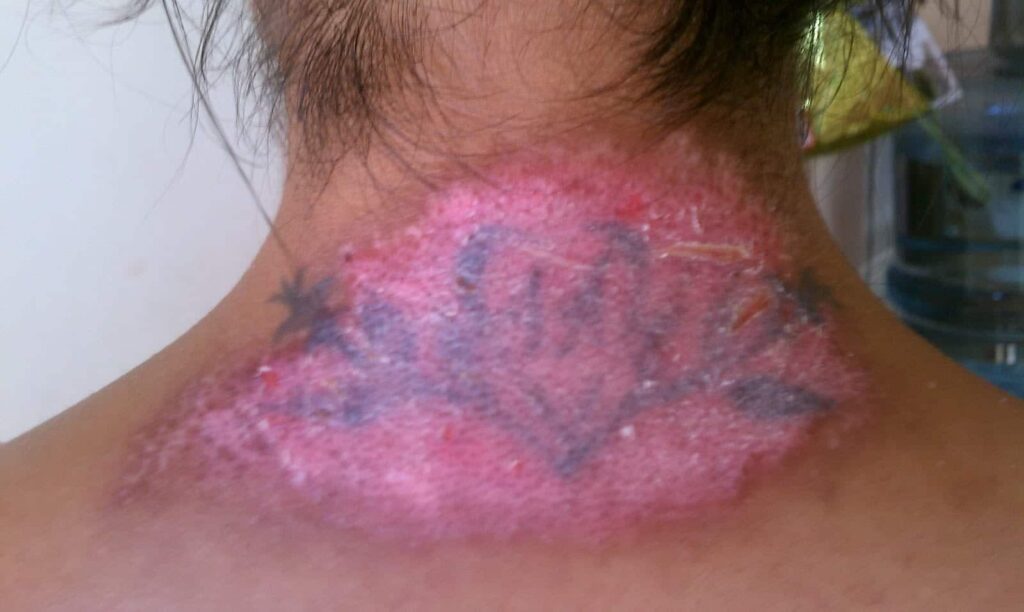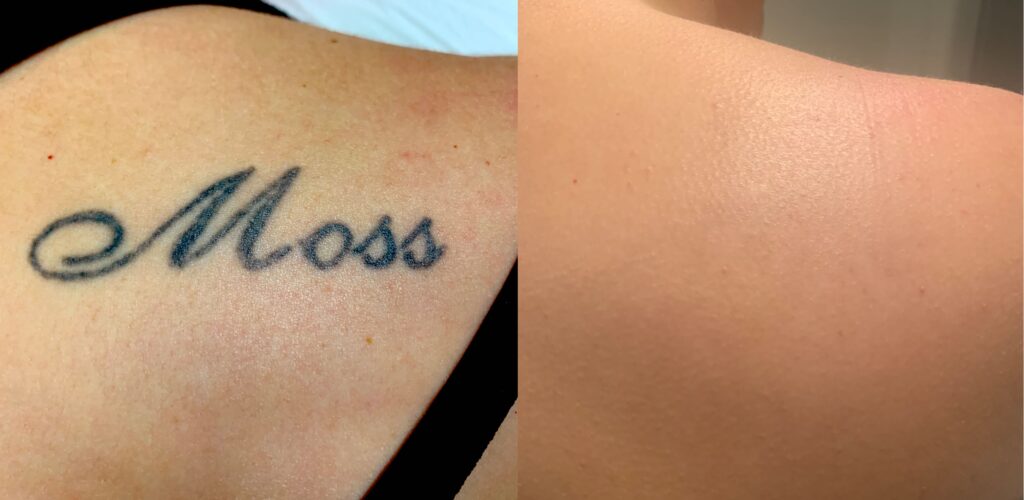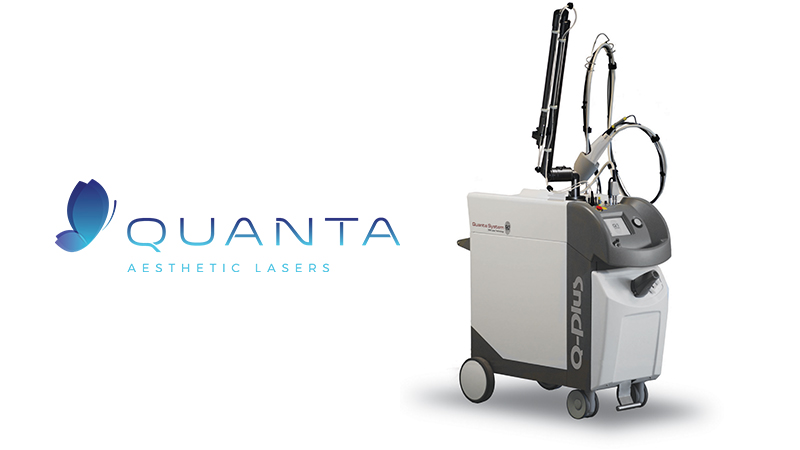The history of tattoo removal can be traced back to ancient times when various methods were used to remove tattoos. However, it wasn’t until the invention of laser technology in the 1960s that tattoo removal became a more viable and effective option. Nowadays technology is very efficient and we have the ability to remove and lighten tattoos with little to no scarring or damage to the skin at all.
Early methods of Tattoo Removal

Early removal methods, such as Salabrasion or Dermabrasion. The process of sanding down to deeper levels of the skin with a high-speed rotary device and involves physically abrading the skin to remove the tattoo. Needless to say, these methods are often very painful and result in very bad scarring as you can see in the example here. I can’t stress enough how much I do NOT recommend these methods for getting rid of your unwanted tattoos.
Laser Technology
With the invention of laser technology, tattoo removal became much less invasive and resulted in fewer side effects. The first laser designed for tattoo removal was the Q-switched ruby laser, which was developed in the 1960s. This laser emitted short pulses of intense light that broke down the ink particles in tattoos, allowing them to be absorbed and eliminated by the body.
At first, this laser worked quite well for tattoo removal due to the fact that most black tattoo inks were based on the color blue and the “ruby” laser sees the spectrums of blue the best. this means, blue, green, purple, and so on. The challenge came later on as tattoo inks progressed and ink companies found deeper darker black inks by basing them in browns and other colors. When this happened the Ruby wavelength started to prove less effective against these colors.

In the decades that followed, other types of lasers were developed, including the Q-switched Nd: YAG laser which would fire at an Nanometer of 1064nm. Penetrating the skin far deeper thus attacking the black inks people were after. Not long thereafter scientists also found that a wavelength of 532nm (half of 1064nm) proved very useful against the red pigments in tattoos and thus you had the birth of the 3-wavelength laser tattoo removal machine such as the one we use, the Quanta Q-Plus C.
Things to remember

Today, laser tattoo removal is a popular cosmetic procedure, with many different types of lasers available to choose from, and knowing what this technology is capable of and what the side effects might be is very important. The type of laser used for tattoo removal depends on the size, color, and location of the tattoo, as well as the patient’s skin type. At Black Sage Laser we trust in the Quanta Q-Plus C and chose this laser over all others like the PicoSure because, after all of our research, we found it was truly the number one machine out there for tattoo removal.
In conclusion, the history of tattoo removal has come a long way since ancient times and even since the days of sanding down the skin, but hey it all had to start somewhere right? With the development of laser technology, tattoo removal has become a safe and effective option for those looking to remove unwanted tattoos or even just lighten them up to get better more modern work. While there is still room for improvement in the field, today’s tattoo removal techniques are much less painful and invasive than those of the past. Make sure you reach out to our professional laser technician and set up an in-person consultation to answer any and all questions you might have.
